A developer has managed to turn a laptop from 1989 into a cryptocurrency mining machine , but it won’t be making anyone rich any time soon.
The computer in question is the once cutting-edge Toshiba T3200SX, which is powered by a 16MHz Intel 386SX processor and runs on MS-DOS. When it first hit the market, the T3200SX was available at the low, low price of $6,299 (or $13,896 in today’s money).
The architect of the mining project, Dmitrii Eliuseev, has published a blog post setting out his process, which included programming his own mining software for MS-DOS (now available on GitHub ) and calculating potential earnings over time.
Retro crypto mining rig
Transforming unlikely hardware into Bitcoin mining machines has become something of a tradition in recent years; smartphones , Raspberry Pis and even Teslas have been used to mine cryptocurrency. Thanks to Eliuseev, the Toshiba T3200SX now joins this prestigious list.
However, while the T3200SX is indeed capable of mining Bitcoin, it achieves a performance of just 15 hashes per second, which Eliuseev estimates would yield one dollar’s worth of Bitcoin every 584 million years. Predictably, the Toshiba T1100 Plus from 1986 didn’t fare any better, producing 3.5H/s running the same code.
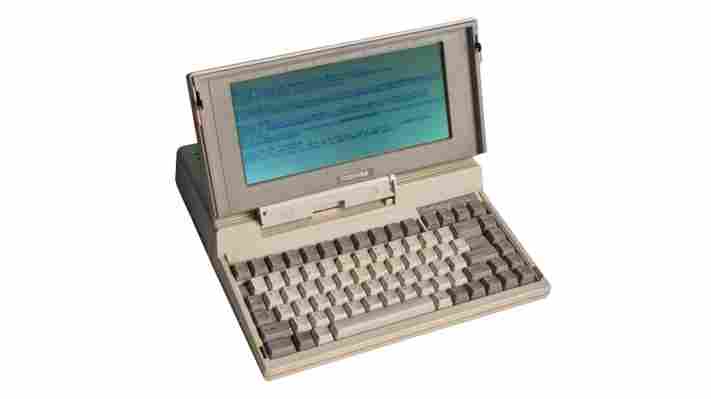
For context, the most performant ASIC miners on the market today produce 110 terahashes/second, 100 trillion times more than the T3200SX. And Bitcoin mining farms are packed out with many hundreds of these ASICs.
As noted by our sister site Tom’s Hardware, there’s more bad news for anyone hoping to turn a profit using the T3200SX. Under load, the laptop guzzles roughly 39W of power, which would cost the owner around $3.30/month.
Unfortunately, therefore, mining Bitcoin on the T3200SX will make you the opposite of rich: for every $1 earned, you’ll lose $23.1 billion to the utilities company.
Via Tom's Hardware
HDMI on Xbox Series X: what you need to know
The Xbox Series X is now available to buy, giving a big boost to the capabilities you’d expect from previous home consoles.
Unfortunately, stock issues are still preventing many people from finding an Xbox Series X (or Xbox Series S ). But whether you’ve been lucky enough to find one yet or not, it’s worth considering that the new Xbox Series X’s HDMI capabilities – and its TV capabilities – are different to what you’d expect to find on a current-gen console.
Both the Xbox Series X and Series S come with an HDMI 2.1 connection as standard. It's worth noting, though, that while the Xbox Series X comes with an HDMI 2.1 supporting cable, the Xbox Series S only comes with an HDMI 2.0 cable – which we'll look at in more detail below.
This allows the consoles to support a max 120fps (frames per second) in games running at 4K resolution. What this means when it comes to console gaming is a huge leap forward in gameplay, speed and performance. For comparison, the Xbox One X could only hit 4K/60fps, meaning the bar has been significantly raised for this console generation.
Not only does HDMI 2.1 allow for much better frame rates, it also means you can transfer any 4K and even 8K image qualities from your games console to a compatible TV. The biggest caveat here, however, this is that 8K gameplay will be limited to 60fps – although you likely won't be playing any 8K games for a while.
There’s a lot to get excited about when it comes to HDMI connections and the Xbox Series X, as well as a lot to learn, which is why we’ve created this guide.
Xbox Series X/S ports and cables
Microsoft's Xbox Series X comes with an HDMI 2.1 port at the back of the console and a matching cable in the box.
The Series S, on the other hand, comes with HDMI 2.1 port but an HDMI 2.0 cable ("high speed" rather than "ultra high speed"). This means that the cheaper console can play games in 4K, but it won't be able to play games at 4K/120fps with its included cable.
Now, it's important to note that even if your TV doesn't support an HDMI 2.1 connection, you can still plug the console into a standard HDMI port in a TV or monitor – just with more more picture limitations.
This all comes down to the differences between these two port/cable standards. The HDMI 2.1 standard supports a higher bandwidth of data transfer, at 48Gbps (gigabytes per second) compared to the 18Gbps supported by HDMI 2.0b.
More gigabytes equals more data, which equals higher resolutions and faster frame rates.
HDMI 2.1 vs HDMI 2.0
Put simply, different HDMI cables can transmit different values. These values are the video and audio quality which are transferred from the HDMI cable to the screen.
The difference between HDMI 2.0 and 2.1 is going to be noticeable to those with a more discerning eye here. An Xbox Series X game, running in 4K/120fps will obviously look and play magnificently and it's something a lot of PC users have been used to for a while now.
It's hard to describe how different it will look until you actually see it. But if you're instead playing an Xbox Series X game on a TV which has an HDMI 2.0b port then you'll notice that if you play in 4K, you won't be able to play in 120fps.
For the Series S, you'll be playing games in 1440p (which is known as QHD) and it will be able to hit 120fps. If, however, your TV does support 4K you can watch films and other media in 4K and the Series S will upscale games to 4K where compatible.
To put this leap in quality into perspective, the previous HDMI 2.0b standard used on most modern TVs today does allow up to 4K video at 60 frames per second, but to hit higher frame rates like 120fps you have to drop resolution quality to HD.
HDMI 2.1 removes this barrier, meaning you can play in Ultra HD quality while still having silky-smooth frame rates on your games.
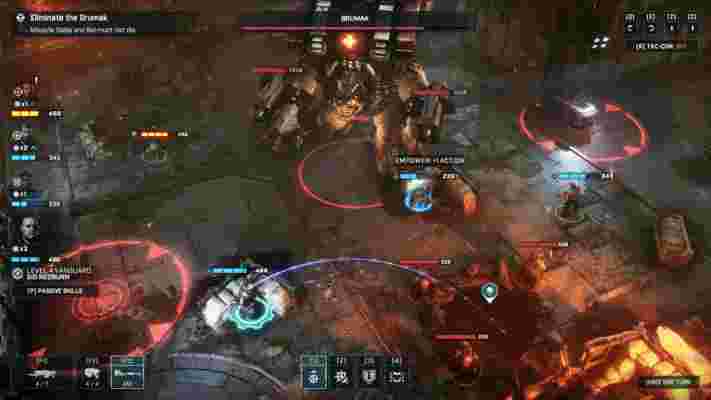
TV HDMI support
The capabilities of your TV are crucial here too. If your TV doesn't support 4K resolutions, for example, you won't be able to play next-generation games at 4K. Most 4K TVs tend to come with three or four HDMI 2.0 ports as standard, whereas newer models are starting to ship with anywhere between one and four HDMI 2.1 ports – it really varies between TV brands, and you'll have to be careful you end up getting the inputs you need for your intended level of play.
Even HD TVs, though, tend to come with HDMI 2.0 ports.
Frame rates vary between televisions, too. Most TVs come with a 60Hz or 120Hz panel (enabling 60fps or 120fps play respectively), though some cheaper models make do with a 50Hz panel, which will be somewhat limiting for Xbox Series X games like The Falconeer, which can hit 120fps at 4K if your TV supports that.
It is important to note that while the Series X uses HDMI 2.1 as the connection, it doesn't mean your TV also needs to support HDMI 2.1. You can play over an HDMI 2.0 port and cable, just with a max 4K/30fps performance ceiling.
8K may be on your mind too. Any 8K TV will almost certainly ship with the newer HDMI port – but 8K sets are still expensive, and 8K gaming isn't quite on the horizon yet.
A good example to use here is the difference between Monster Hunter: World on Xbox One and Xbox Series X . In this example, performance has nothing to do with the HDMI cable but instead your TV's refresh rate.
Using a Full HD TV, with a refresh rate of 60Hz, you can play Monster Hunter World at just about 60fps on Xbox Series X through the console's backwards compatibility.
If you played it on the same TV, using a current-gen Xbox One, you won't hit 60fps because the console simply isn't powerful enough to do so. In this case, the HDMI port and cable won't matter.
In general, however, if you want the best results from your shiny new next-gen console, you'll want to have a TV which also supports the HDMI 2.1 connection so you can enjoy 4K gaming at 120fps.
You might also want to check out the capabilities of HDMI on PS5 .
The Nintendo Switch Pro Controller really needs a refresh
I’ve been a massive fan of the Nintendo Switch Pro Controller since its release; I adore the chunky face buttons and the exceptional battery life, and Nintendo absolutely nailed the ergonomics. The fact that it has asymmetrical analog sticks is also another huge win in my book.
However, after almost five years the Switch Pro Controller is starting to feel noticeably outdated, and it’s about time Nintendo gave its premier pad a makeover.
The Switch Pro Controller undoubtedly has its issues, some of which have existed since launch, while others have manifested themselves as the years have rolled on. And considering that the list price of the Switch Pro Controller is still $69.99 / £59.99 / AU$99.95 (although you can often get it for less), it’s also starting to feel needlessly expensive for what you get. So what can Nintendo do to fix it?
Fix the D-pad
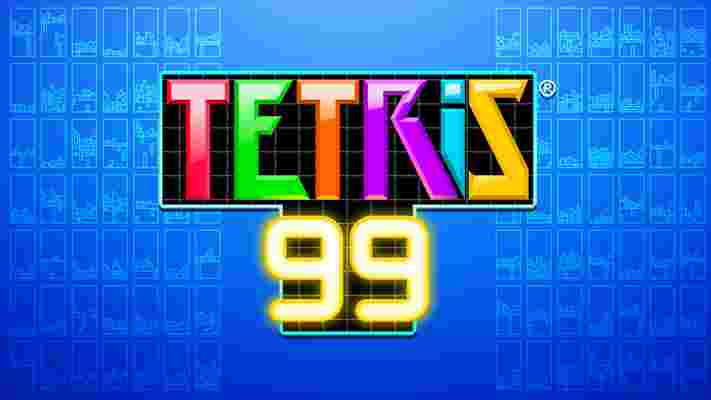
The biggest issue I have with the Switch Pro Controller is its finicky D-Pad. It’s been unreliable since day one, to the point where I tend to avoid using it entirely if I can.
Play a game of Tetris 99 using the Nintendo Switch Pro Controller’s D-Pad and it’s almost guaranteed that you’ll end up hard-dropping a Tetronimo you didn’t mean to, resulting in early elimination and cries of frustration. And that’s because the Pro Controller’s D-Pad has a nasty habit of falsely registering horizontal inputs as vertical inputs.
Considering that Nintendo has a history of producing almost impeccable D-Pads over the years (not including the microscopic one on the GameCube controller), the Switch Pro Controller’s borked directional pad really is an outlier for the company.
The dodgy D-Pad problem is exacerbated further by the fact that the Joy-Con controllers don’t have a dedicated D-Pad either, which means you’re at the mercy of Nintendo’s Pro Controller if that’s your preferred way to play.
An overhauled D-Pad would go a long way to making Nintendo’s Pro Controller feel worthy of its professional moniker, then, and it’s long overdue at this point.
Add a headphone jack
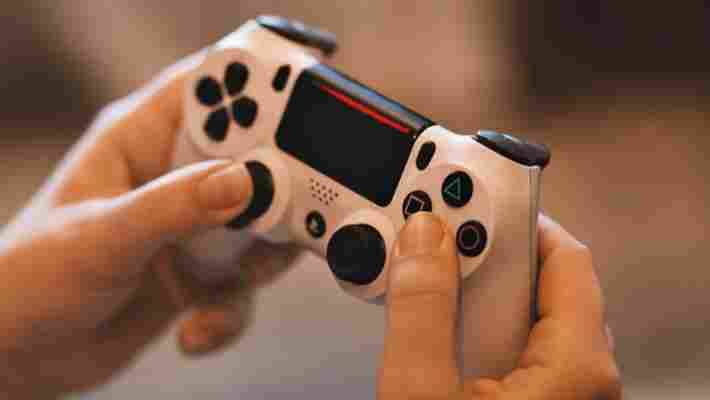
It’s also rather baffling that the Nintendo Switch Pro Controller still doesn’t have a headphone jack. Even when it launched in 2016, this seemed like a strange omission on Nintendo’s part, especially as Sony’s DualShock 4 gave us this feature in 2013, and Microsoft quickly updated its original Xbox One controller to offer the same functionality in 2015.
Seven years later, the lack of a headphone jack on the Nintendo Switch Pro Controller seems like a huge oversight, and it really needs to be addressed. I rarely play games using my TV speakers alone, but that’s still the only option on the Switch unless you have a pair of Bluetooth headphones – and Nintendo only added Bluetooth connectivity to the Switch last year.
Considering that the Switch itself has a headphone jack, there’s no reason why Nintendo couldn't have stuck a 3.5mm port on its controller by now.
Improve the HD Rumble
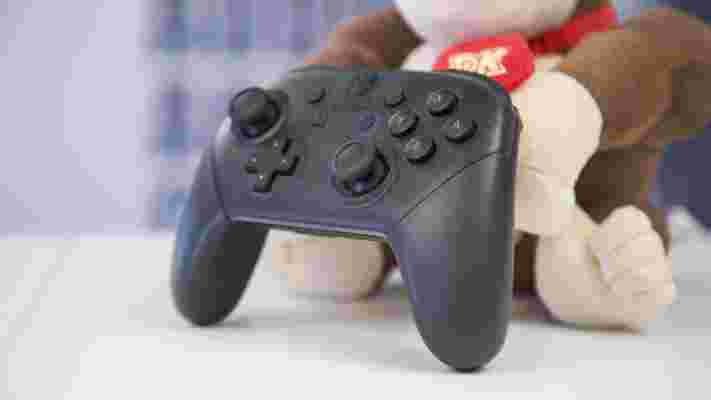
Sony’s DualSense controller has proven that haptic feedback can really dazzle; but as the old saying goes, “Nintendo did it first”.
HD Rumble is a criminally underutilized part of the Nintendo Switch, with even Nintendo failing to use it effectively in its first-party titles. In fact, the last time HD Rumble really wowed was in 1-2-Switch , which also feels like the time when Nintendo gave up on the technology.
HR Rumble may not be as advanced as Sony’s hand-tingling haptics, but I’m convinced that Nintendo could add a new and improved HD Rumble to its Pro Controller, which currently feels like you’re holding a vibrating Nokia 3310 when it 'rumbles'.
Add analog triggers
Wouldn’t it be great if Nintendo ditched the digital triggers on the Nintendo Switch Pro Controller and added some analog ones, as on Microsoft's and Sony’s pads? Yes, yes it would.
If you’re unclear as to the difference between the two, digital triggers basically act as a button: you press them down and they register an input. Analog triggers, meanwhile, provide more fidelity and operate more like a gas pedal on a car – they can register different levels of input depending on how far down you press a trigger, which gives players more granular control in racing games, for example.
Having analog triggers on the Pro Controller would make racing games feel so much more satisfying to play on Switch , and would benefit future titles like Mario Kart 9 . For now, we’re stuck with holding down a button to make cars go vroom.
Easy peasy
If Nintendo implemented these four modest changes, it would improve its tired-feeling pad significantly. We’ve seen Nintendo refine the Switch itself with the Switch OLED to great success, so hopefully Nintendo will give its Pro Controller some long-overdue love and attention sooner rather than later.